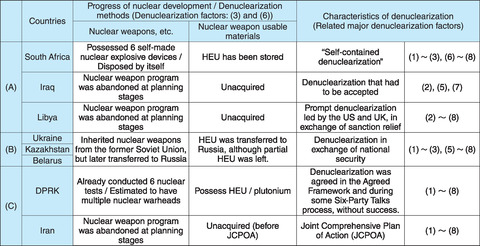Table 10-1 Characteristics of denuclearization and related denuclearization factors

Toward realizing a world without nuclear weapons and terrorism, we conducted a factor analysis on the past cases for examining the elements for successful future denuclearization.
Three classes of countries were considered: (A) countries that had completely denuclearized, (B) countries that inherited nuclear weapons but later transferred them to other countries, and (C) countries where denuclearization is being pursued. As summarized in Table 10-1, their history of nuclear weapon development and denuclearization, nuclear capabilities, denuclearization methods, etc., were then investigated. For example, Iraq, which had secretly engaged in uranium enrichment and nuclear weapons programs, had to terminate their weapons of mass destruction (WMD) program and dispose of their WMDs after their defeat in the Gulf War in accordance with United Nations Security Council Resolution (UNSCR). With cooperation and support from the United Nations Special Commission on Iraq (UNSCOM), the International Atomic Energy Agency (IAEA) verified Iraq's clandestine nuclear activities. Libya also secretly engaged in uranium enrichment and nuclear weapons programs without having nuclear development capabilities. However, Libya abandoned this program in exchange for sanction relief because the Libyan economy had been severely exhausted due to the imposed sanctions. The subsequent removal of uranium-enrichment-related items was promptly and successfully led by the US and United Kingdom (UK).
Based on this case study, eight key factors demonstrated to influence denuclearization were extracted: (1) motivation for nuclear development or maintaining inherited nuclear weapons, (2) domestic and international circumstances at the time of denuclearization, (3) progress of nuclear development, (4) effects of sanctions, (5) international framework for denuclearization, (6) denuclearization methods, (7) verification methods and verifier, and (8) incentives for denuclearization.
Finally, the relationship between and timeline of these denuclearization factors required to help the international community lead successful denuclearization efforts were studied. First, pushing a country toward denuclearization requires incentives for denuclearization (i.e., factor 8) while considering their motivation for nuclear development or maintaining their inherited weapons (i.e., factor 1) and the domestic and international circumstances (i.e., factor 2). In this context, providing national security and relieving sanctions could be effective incentives for denuclearization, especially if their economy has been severely damaged by international sanctions (i.e., factor 4). Next, international agreement and engagement with nuclear-weapon states (NWS) are necessary when detailing the denuclearization framework (i.e., factor 5). The selected denuclearization methods (i.e., factor 6) must include the effective, efficient, and prompt implementation of irreversible measures while considering the country's progress of nuclear development and the domestic and international circumstances (i.e., factors 3 and 2, respectively). Thirdly, regarding the verification methods and verifier (i.e., factor 7), NWS should perform verification from the perspective of non-proliferation if the target country has nuclear weapons. Otherwise, the IAEA could perform verification using the measures implemented by the IAEA under the Comprehensive Safeguards Agreement and its Additional Protocol with its member states.
Further studies on denuclearization methods and verification methods will be conducted to continue efforts to lead to successful denuclearization.
(Makiko Tazaki)
<Previous: 10 Development of Science & Technology for Nuclear Nonproliferation | Next: Colophon>